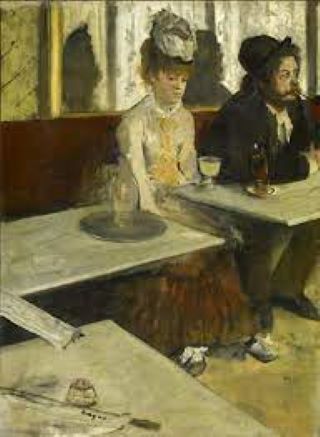The Ashcan School, New York
Urban Realism was an art movement which largely grew up in America in the 1900s to 1960s. But to understand its objectives, it is perhaps necessary to back track 60 years previously to the development of Realism. We touched on this with a definition in a previous post about the Kitchen Sink Painters.
Realism was a world wide movement, which began in the 19th century in France, led by artists such as Jean-Francois Millet and Gustave Courbet. These artists rejected the academic convention and the idealized reality of the Romantic period, which made everything beautiful and perfect.
Courbet and Millet were instead committed to painting only what they could see, tackling social issues by painting subjects that were not gentile, such as the rural bourgeoise, peasants, and the working conditions of the poor. Their portrayal of real contemporary people and situations with truth and accuracy, even if “unpleasant,” became known as Realism.
Courbet and Millet were great influencers of the Impressionists, with famous paintings such as The Stone Breakers, After Dinner at Ornans and the Gleaners.…………




But of the Impressionist painters, it was Edouard Manet, and Edgar Degas who painted most in the realist style, especially Degas, with his ballet and theatre scenes, and portrayals of every day life, such as The Absinthe Drinker.



Nineteenth century Realism also developed concurrently in Russia (led by Ilya Repin); the Netherlands (The Hague School, which influenced the early works of Van Gogh); in Germany, (where Courbet had a marked influence on artists such as Adolph Menzel); in Italy, and in Britain, where American James Abbott McNeil Whistler and others had great success.
In the United States, Winslow Homer and Thomas Eakins were important Realists and were forerunners of the Ashcan School, an early 20th-century art movement largely based in New York City.
The Ashcan School (or Ash Can School) was a small group of painters who strove to chronicle everyday life in New York City during the pre-First World War period, producing realistic and unvarnished pictures and etchings of urban streetscapes and genre scenes. The Ashcan School was led by Robert Henri (1865-1929), who was extensively trained in Pennsylvania and Paris and was influenced by the strong, unglamorous realism of Thomas Eakins and Thomas Anshutz. He mentored four other painters, Everett Shinn (1876-1953), George Luks (1866-1933), William Glackens (1870-1938) and John Sloan (1871-1951)1 who all who worked together at several local newspapers in Philadelphia and gathered to study, share studios, and travel.2 One by one, between 1896 and 1904 they all moved to New York, including Robert Henri.


They embraced gritty, working class subjects. They were fascinated by the influx of immigrants and the vibrant working-class neighbourhoods of lower Mannhattan, these artists and other contemporaries portrayed the varied and changing world around them. 3
It was the city’s dynamic crowds and human interactions they found most compelling. Observing the dramas, large and small, that occurred around them, artists portrayed throngs of people on the street and at leisure, attending the theater and the circus. Some of these scenes integrate humour and flirtation, while others show more serious subjects, emphasizing the contrast between rich and poor in art with political and reform-minded goals.3



A young man, George Wesley Bellows (1882-1925) moved to New York from Ohio in 1904 to also be trained by Robert Henri, and became one of the most well known, and most admired American painters of his generation. Anne is going to introduce you to George Bellows and his works tomorrow.
“The Ashcan School" was never an organised art school or group. Rather, the term arose only in 1916 from a drawing by Geroge Bellows called Dissappointments of the Ash Can (sic) shown below. It appeared in the Philadelphia Record in April 1915 and depicted three men examining the contents of an ash can.
Cartoonist Art Young used the term in a disparaging critique that appeared in the New York Sun in April 1916; 2

If you would like to see more of the work of the Ashcan painters, please watch this short 2 minute AnArt4Life video:
The legacy of the Ashcan School endured through to the American Social Realism Scene Painting of the 1920s and 1930s, thanks to Edward Hopper (1882-1967).
We will feature Edward Hopper in an upcoming post as he was such an important contributor to American Realism in that era.
Footnotes:
With thanks to
- visual-arts-cork.org
- metmuseum.org
- Wikipedia
What do you think of the Ashcan School? Do let us know your opinion by using the following comments box (you must register first to use it)
